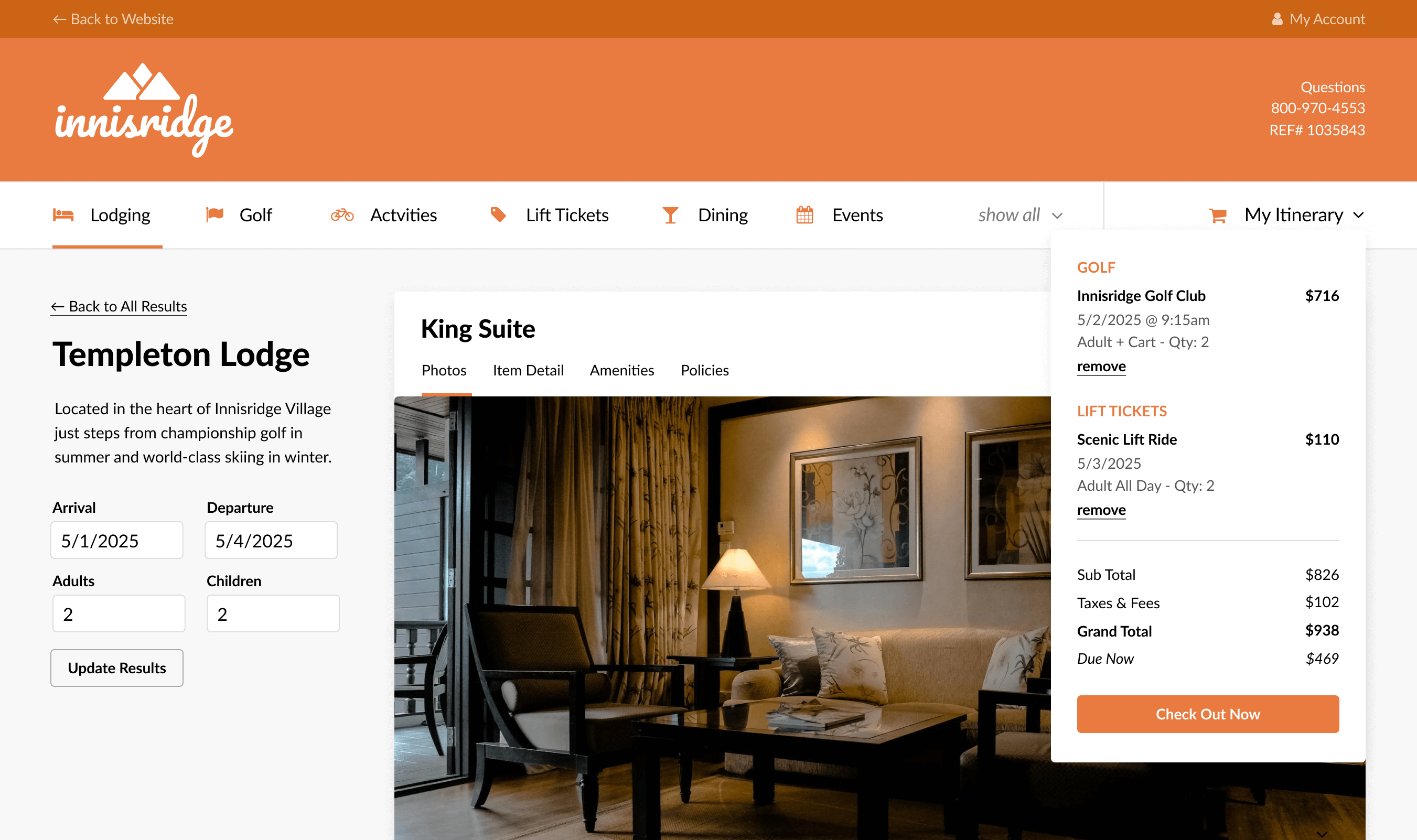
News
Denver, Colo., Oct. 22, 2019—Strong bookings made during the month of September helped boost the overall outlook for the summer season and upcoming winter months. In the most recent DestiMetrics* Market Briefing released by Inntopia with data collected and compiled through Sept. 30, aggregated occupancy for the month of September was up a slight 0.8 percent compared to last September, but when coupled with the 2.7 percent increase in the Average Daily Rate (ADR), finished the month with a 2.6 percent increase in revenue in a year-over-year (YOY) comparison.
While bookings for the remaining summer months and early winter were showing a cooling trend in August, the September booking pace showed a robust rebound. In a year-over-year comparison, bookings made in September for arrivals in the six months from September through February were up five percent. The strength was even more apparent in the so-called last-minute bookings made during the month with bookings for arrivals in September up a healthy 14.1 percent while October enjoyed a 15.4 percent increase over the previous October.
“One month ago, with our Aug. 31 data, we were looking at a pretty tepid finish to the summer season for our mountain destinations—declining occupancy and flat revenue that are a far cry from the steady growth seen in previous years,” reported Tom Foley, senior vice president of Business Operations and Analytics for Inntopia. “With the surge in bookings during the month for short-term arrivals in September and October, the situation is looking more positive with respect to how the season will end. ADR and revenues for the summer are now more likely to eke out some modest gains but occupancy is questionable and destinations will have to sustain the September booking pace through October if they hope to push occupancy into the positive range.”
That lively September booking pace also gave a welcome assist to the first few months of the winter season. As of Sept. 30, aggregated occupancy for the first five winter months (November through March), is up 0.4 percent compared to the same time last year. Most notably, year-over-year occupancy is up 6.6 percent in December. However, November and February are both down 3.6 percent. ADR for the winter months is up 3.8 percent and the increases in both occupancy and rate are yielding a 4.2 percent increase in revenue.
Foley added that the upcoming winter is showing a similar pattern but is also quick to point out that although optimistic, the numbers through Sept. 30 for November through March are still fairly low in volume and subject to fluctuation depending on a variety of variables in the coming months–including snow conditions and economic shifts.
Economic and political news continued to roil the markets and consumer confidence during September. The Dow Jones Industrial Average (DJIA) edged up a slight 1.4 percent for the fourth monthly increase in the past six months. However, the DJIA is only 1.7 percent higher than it was last September with dramatic daily and monthly swings continuing as the norm.
“Investors remain concerned about U.S. foreign trade policy, Brexit, the volatile U.S. and China trade relationship, the domestic political environment, and more recently, a sharply slowing European economy,” assessed Foley. “This uncertainty in financial marketplaces can undermine consumer and employer confidence, both of which have a direct impact on the destination travel market.”
And while the Consumer Confidence Index (CCI) stabilized in August, it dropped a significant 6.8 percent during September and finished the month 7.5 percent lower than it was in September 2018. The national Unemployment Rate dipped from 3.7 percent in August to 3.5 percent in September for the first decline since April. Adding to economic anxiety, employers again missed analysts’ expectations by adding only 130,000 new jobs instead of the expected 145,000. Despite unemployment at, or near, all-time record lows, the pace of job creation continues to slow as employers are exhibiting caution in the face of continued economic uncertainties.
“It has become increasingly clear that the summer growth rates between 2013 and 2017 are a thing of the past. Recent data indicates growing rate intolerance and slowing occupancy, ADR, and room revenue since January 2018,” cautioned Foley. “These anemic growth patterns persisted despite a strong and snowy 2018/19 winter season and a mostly wildfire-free summer. Occupancy, rate, and revenue have been trending down towards flat and this early winter data shows the pattern persisting into the coming months.”
-30-
*DestiMetrics, part of the Business Intelligence platform for Stowe-based Inntopia, tracks lodging performance in resort destinations. They compile forward-looking reservation data each month and provide individualized and aggregated results to subscribers at participating resorts. Data for western resorts is derived from a sample of approximately 290 property management companies in 18 mountain destination communities, representing approximately 30,000 rooms across Colorado, Utah, California, Nevada, Wyoming, and Idaho and may not reflect the entire mountain destination travel industry. Results may vary significantly among/between resorts and participating properties.